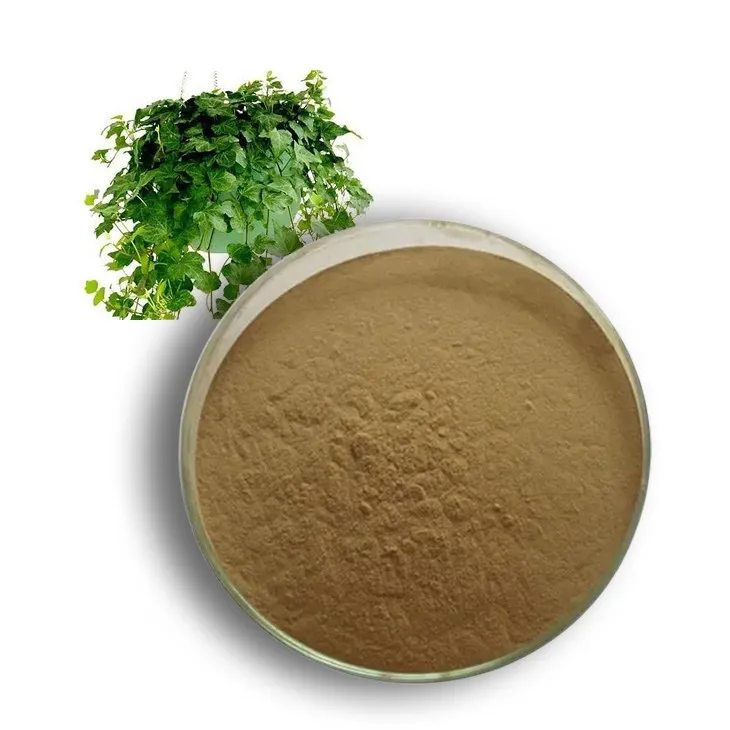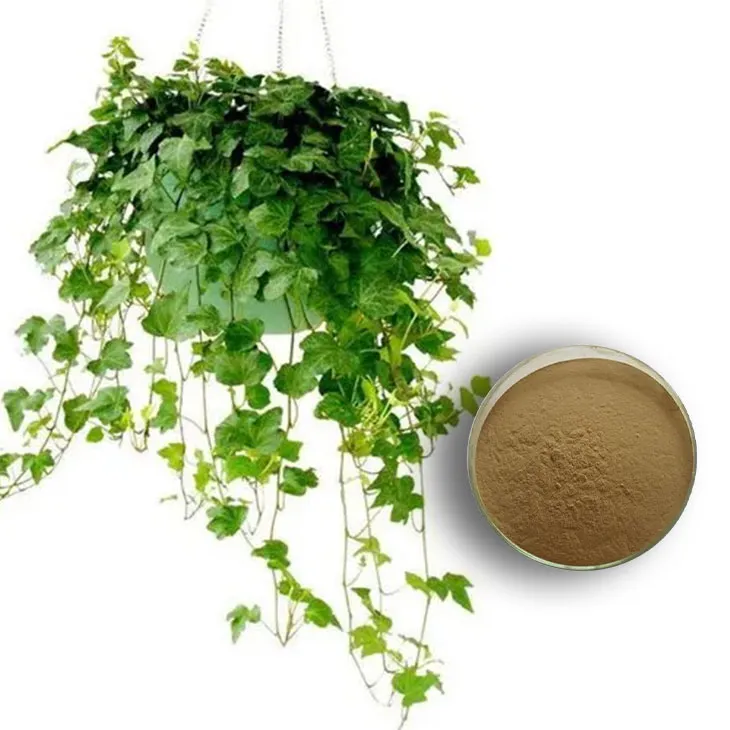- 0086-571-85302990
- sales@greenskybio.com
Optimal Bioavailability of Ivy Extract.
2024-11-29

1. Introduction
Ivy Extract has been a subject of great interest in various fields, including medicine and natural health. Bioavailability - the proportion of a drug or other substance which enters the circulation when introduced into the body and so is able to have an active effect - is a crucial factor in determining the effectiveness of Ivy Extract. Understanding and optimizing the bioavailability of Ivy Extract can unlock its full potential in terms of therapeutic and health - promoting properties.

2. The Importance of Bioactive Components in Ivy Extract
Ivy extract contains a variety of bioactive components. For example, saponins are one of the key components. These bioactive substances are responsible for many of the potential health benefits associated with ivy extract. They may have anti - inflammatory, antioxidant, and expectorant properties.
However, the effectiveness of these bioactive components depends on their bioavailability. If they are not properly absorbed and utilized by the body, their potential benefits may not be realized. This is why achieving optimal bioavailability is of utmost importance.

3. Extraction Techniques and Bioavailability
3.1. Traditional Extraction Methods
Traditional extraction methods such as solvent extraction have been commonly used for obtaining ivy extract. In solvent extraction, solvents like ethanol or water are used to dissolve the bioactive components from the ivy plant. However, these methods may have some limitations in terms of bioavailability. For instance, the harsh conditions of some solvent extractions may lead to the degradation of some bioactive components, thus reducing their bioavailability.
3.2. Modern and Advanced Extraction Techniques
On the other hand, modern extraction techniques offer some advantages in preserving bioavailability. Supercritical fluid extraction, for example, uses supercritical carbon dioxide as the solvent. This method operates under milder conditions compared to traditional solvent extraction. It can effectively extract bioactive components while minimizing their degradation, which is beneficial for maintaining high bioavailability.
Another advanced technique is microwave - assisted extraction. This technique uses microwave energy to accelerate the extraction process. It can also help in preserving the integrity of bioactive components, thereby enhancing their bioavailability.

4. The Body's Metabolism and Ivy Extract Uptake
The body's metabolism plays a significant role in the uptake of ivy extract. Once the extract is ingested, it undergoes various metabolic processes in the digestive system and liver.
4.1. Digestion and Absorption
In the digestive tract, the ivy extract needs to be broken down into smaller components to be absorbed. Enzymes in the digestive system play a crucial role in this process. For example, certain enzymes may be required to break down complex saponins into more easily absorbable forms. However, some factors can interfere with this digestion and absorption process. For instance, the presence of certain food components or medications in the digestive tract at the same time as the ivy extract may affect the action of digestive enzymes, leading to reduced absorption and thus lower bioavailability.
4.2. Liver Metabolism
After being absorbed, the components of ivy extract are transported to the liver. In the liver, they may undergo further metabolism. The liver has enzymes that can modify the chemical structure of the bioactive components. This can either enhance or reduce their bioavailability. For example, some liver enzymes may convert a bioactive component into a more active form, increasing its effectiveness in the body. However, in some cases, the liver may metabolize a component in a way that makes it less active or even inactive, decreasing its bioavailability.
5. Strategies to Enhance Ivy Extract Bioavailability
5.1. Formulation and Delivery Systems
One strategy to enhance bioavailability is through the use of appropriate formulation and delivery systems. For example, encapsulation of ivy extract can protect the bioactive components from degradation during digestion and improve their absorption. Nanoparticle - based delivery systems are also being explored. These nanoparticles can be designed to target specific cells or tissues in the body, ensuring that the bioactive components of ivy extract are delivered to the right place and at the right time, thereby enhancing their bioavailability.
- Liposomes: Liposomes can be used as carriers for ivy extract. They are composed of phospholipids and can encapsulate the bioactive components. Liposomes can fuse with cell membranes, facilitating the uptake of the extract by cells.
- Microemulsions: Microemulsions are another option. They are thermodynamically stable systems that can improve the solubility and dispersibility of ivy extract, which in turn can enhance its bioavailability.
5.2. Co - Administration with Other Substances
Co - administration of ivy extract with certain substances can also enhance its bioavailability. For example, some vitamins or minerals may interact with the bioactive components of ivy extract in a way that promotes their absorption. Vitamin C, for instance, may act as an antioxidant and protect the bioactive components from oxidative degradation during absorption, thus increasing their bioavailability.
Another example is the co - administration of ivy extract with certain herbs. Some herbs may have complementary effects on the metabolism of ivy extract. For example, ginger has been shown to enhance the absorption of some substances by improving gastrointestinal motility and blood flow. Co - administering ivy extract with ginger may potentially increase the bioavailability of ivy extract.
6. Conclusion
In conclusion, the bioavailability of ivy extract is a multi - faceted concept that is influenced by extraction techniques, the body's metabolism, and various strategies to enhance it. Achieving optimal bioavailability is essential for fully realizing the therapeutic and health - promoting properties of ivy extract. Continued research in this area is necessary to develop more effective extraction methods, understand the metabolic processes better, and explore novel strategies to enhance bioavailability. This will not only benefit those interested in the natural health properties of ivy extract but also have implications for the development of new drugs and therapies based on ivy extract components.
FAQ:
What is the importance of optimal bioavailability of ivy extract?
The optimal bioavailability of ivy extract is crucial as it determines the effectiveness of its therapeutic and health - promoting properties. If the bioavailability is low, the body may not be able to fully utilize the beneficial components present in the ivy extract, thus reducing its potential positive impacts on health.
How do extraction techniques affect the bioavailability of ivy extract?
Extraction techniques play a significant role in the bioavailability of ivy extract. Certain techniques can preserve the bioactive components of the ivy more effectively. For example, gentle extraction methods that avoid excessive heat or harsh chemicals are more likely to maintain the integrity of the active substances in the ivy. These intact bioactive components are more readily absorbed by the body, thus enhancing the bioavailability.
What role does the body's metabolism play in the uptake of ivy extract?
The body's metabolism can either facilitate or hinder the uptake of ivy extract. Metabolic processes can break down the components of the ivy extract into more or less absorbable forms. Enzymes in the body may modify the extract, and depending on these modifications, the absorption and subsequent bioavailability can be affected. For instance, some metabolic reactions may convert the extract into a form that is more easily taken up by cells, while others may render it less available.
What are some potential strategies to enhance the bioavailability of ivy extract?
One potential strategy is to combine the ivy extract with substances that can improve absorption. For example, some lipids or surfactants may help in emulsifying the extract, making it more accessible to the body's absorption mechanisms. Another strategy could be to optimize the dosage form. For instance, a slow - release formulation might ensure a more sustained release of the active components, allowing for better absorption over time. Additionally, improving the solubility of the extract can also enhance its bioavailability.
Are there any side effects associated with improving the bioavailability of ivy extract?
While enhancing the bioavailability of ivy extract can potentially increase its beneficial effects, it may also increase the risk of side effects if not properly regulated. Higher bioavailability means a greater amount of the active components may be available in the body. If these components have toxic or adverse effects at higher concentrations, then over - enhancing bioavailability could lead to problems such as gastrointestinal discomfort, allergic reactions, or interference with other medications. However, with proper research and controlled implementation, these risks can be minimized.
Related literature
- Bioavailability of Ivy Extract: A Comprehensive Review"
- "Enhancing the Bioavailability of Herbal Extracts: The Case of Ivy"
- "Ivy Extract Bioavailability and Therapeutic Efficacy: Current Research"
- ▶ Hesperidin
- ▶ Citrus Bioflavonoids
- ▶ Plant Extract
- ▶ lycopene
- ▶ Diosmin
- ▶ Grape seed extract
- ▶ Sea buckthorn Juice Powder
- ▶ Fruit Juice Powder
- ▶ Hops Extract
- ▶ Artichoke Extract
- ▶ Mushroom extract
- ▶ Astaxanthin
- ▶ Green Tea Extract
- ▶ Curcumin
- ▶ Horse Chestnut Extract
- ▶ Other Product
- ▶ Boswellia Serrata Extract
- ▶ Resveratrol
- ▶ Marigold Extract
- ▶ Grape Leaf Extract
- ▶ New Product
- ▶ Aminolevulinic acid
- ▶ Cranberry Extract
- ▶ Red Yeast Rice
- ▶ Red Wine Extract
-
Avocado Extract Powder
2024-11-29
-
Kelp Extract Powder
2024-11-29
-
Troxerutin
2024-11-29
-
Mangosteen extract powder
2024-11-29
-
Polygonum multiflorum extract
2024-11-29
-
Lycopene
2024-11-29
-
Shikone Extract
2024-11-29
-
Dandelion Root Extract
2024-11-29
-
Nettle Root Extract
2024-11-29
-
Beetroot Powder
2024-11-29





















